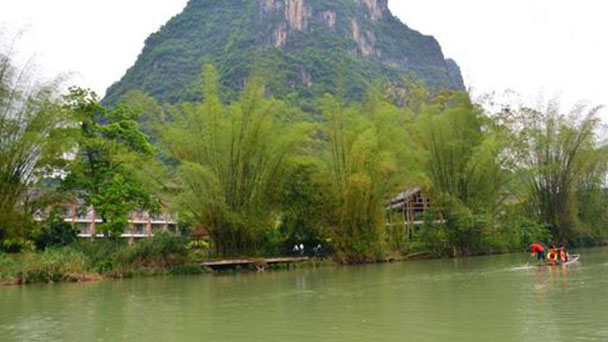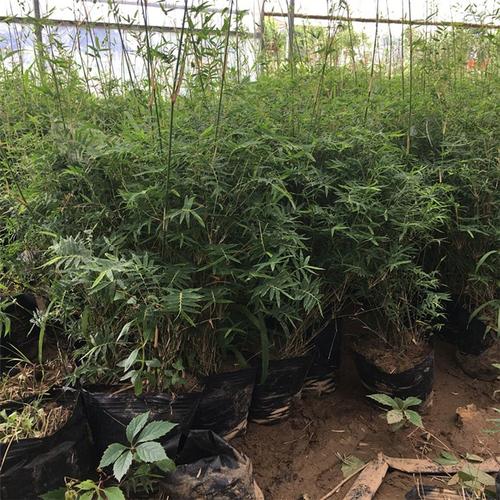How to take care of Bambusa Multiplex
Written by Maggie
Jan 11 2021

Bambusa Multiplex is a very common plant in our daily life. I believe that we can often see the signs of it in our offices and friends' homes. Although its green leaves are very beautiful, it is not easy to take care of Bambusa Multiplex. How to take care of Bambusa Multiplex? Let’s look together!

How to take care of Bambusa Multiplex leaves having white spots
White spots on bambusa multiplex leaves may have been infected with scale insects during cultivation. At this time, the plants can be sprayed with dimethoate oxide or malathion, usually three to four times in a row. In addition to spraying chemicals on the plants to treat scale insects, you can also make your own drugs to treat scale insects at home, using diesel fuel, washing powder and water.
White spots on the leaves of Bambusa Multiplex are usually infected with scale insects, and the plants need to be sprayed with dimethoate oxide or malathion, usually once a week, three or four times in a row to see the effect. If there aren't many white spots on the plant, use a towel with alcohol to wipe the leaves.
Most of the pesticides used to treat pests and diseases are poisonous. Therefore, every time you spray the plants, you should take protective measures to prevent the pesticides from entering your mouth and nose. If you accidentally get the pesticides into your hands when spraying, you should immediately wash them with a lot of water. In addition to spraying chemicals on the plants to treat scale insects, you can also make your own.
When making medicine, you can mix diesel oil, washing powder and water according to the 10:6:6 ratio, then spray the need to dilute the medicine with water first, so that the best effect can be achieved. You can also make your own medicine by mincing garlic, boiling it in a pot, and then spraying the plants with cooled garlic water.
Scale insects usually appear in high-temperature and humid environments. When growing Bambusa Multiplex, pest control measures can be taken in advance in the case of gradually rising temperature. At the peak of the scale insect outbreak, the leaves can be wiped with water mixed with liquor. The reason why liquor can prevent and control scale insects is that liquor has the effect of disinfection.

How to take care of Bambusa Multiplex leaf tips yellowing and drying
A Bambusa Multiplex leaf tips yellowing and drying can be caused by lack of water, excessive sunlight, soil discomfort or insufficient fertilizer. It is a water-friendly plant, so it is necessary to water the plants in time. The demand for Bambusa Multiplex is not high, but the plants need to be properly fertilized and provided with nutrients during the growing period.
1. Moisture for Bambusa Multiplex
During cultivation, the yellow and dry leaves of Bambusa Multiplex may be caused by the lack of water. At this time, the plants should be watered in time, and the water around the plants should be sprayed appropriately to increase the air humidity. Bambusa Multiplex is a water-loving plant. Water the plant in time during its growing. Water thoroughly each time, but do not leave any water.
2. Light for Bambusa Multiplex
Bambusa Multiplex likes light, but too much light received by the plants during cultivation may cause the leaf tips to turn yellow and dry up. In this case, the pot soil should be transplanted to a semi-shade and ventilated environment for cultivation. In the later cultivation of Bambusa Multiplex, the plants should be exposed to sufficient light and shade to prevent the plants from sunburn from the strong light.
3. Soil for Bambusa Multiplex
Bambusa Multiplex grows rapidly. The soil should be replaced every two years during cultivation. If the soil is not replaced in time, the soil will become flat, which will cause the leaves to turn yellow and dry. At this time, it is necessary to timely replace the soil breeding, the replacement of the soil had better choose loose, fertile, breathable, good drainage, late breeding to replace the soil in a timely manner.
4. Fertilizer for Bambusa Multiplex
The yellow and dry leaves of Bambusa Multiplex during cultivation may also be caused by insufficient fertilizer. At this time, appropriate organic fertilizer or potassium dihydrogen phosphate should be applied to the plants, and the amount of fertilizer applied each time should not be too much, so as to prevent fertilizer damage. Bambusa Multiplex has a high demand for fertilizer during the growing period, so proper fertilization is only needed during this stage of cultivation.

Latest Updated
- Benefits of Bugleweed - 7 Science-backed Health Benefits
- Bugleweed Dangers & Side Effects - Is It Poisonous?
- How to Plant Evergreen Trees - What You Should Know
- When to Plant Evergreens - Grow Guide for Evergreen Trees
- 12 Wonderful Evergreen Shrubs for Your Garden
- 12 Popular Evergreen Plants with Pictures for Beginners
- When And How To Prune A Lilac Bush Like a Pro
- How to Grow & Care for Lilac Vine (Hardenbergia Violacea)
- Japanese Lilac Tree (Syringa Reticulata) Care & Propagation Guide
- Shumard Oak Pros and Cons - What to Know
Popular Articles
- Winter maintenance of Antirrhinum Majus
- How to Grow Terminalia Mantaly Tree
- How to Grow and Care for Crossostephium Chinense
- How to grow Antirrhinum Majus in spring
- Peristeria Elata (Dove Orchid) Profile: Info & Care Guide
- Underwatered Snake Plant (Sansevieria Trifasciata) - Signs And How To Fix
- How to Care for Brazilian Jasmine Plant (Mandevilla Sanderi)
- How to Grow & Care for Graptopetalum Purple Delight in Summer
- Rosa Chinensis (China Rose): Plant Growing & Care Tips
- How to Care for Baby Sun Rose (Aptenia Cordifolia)